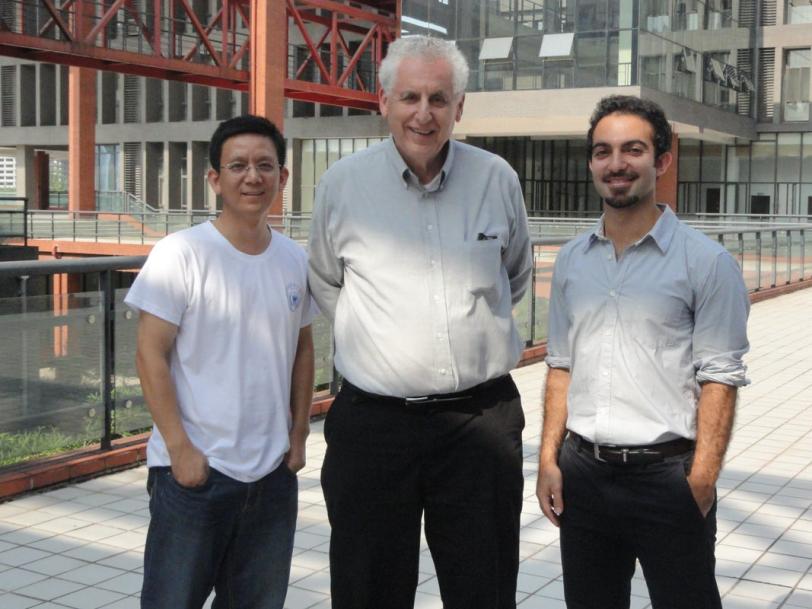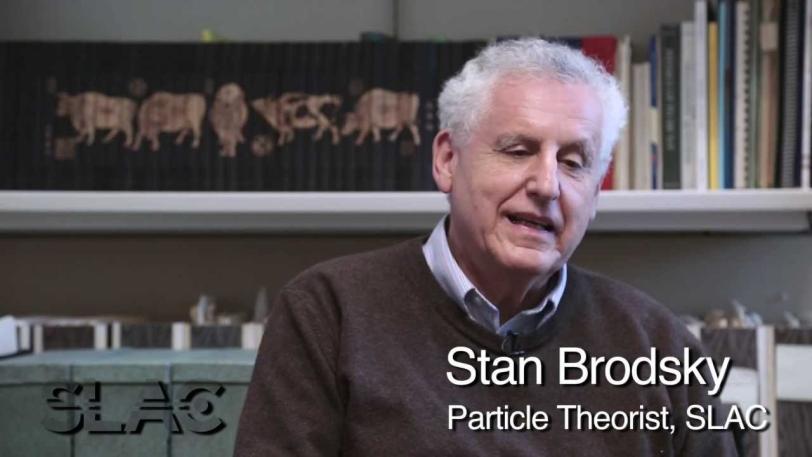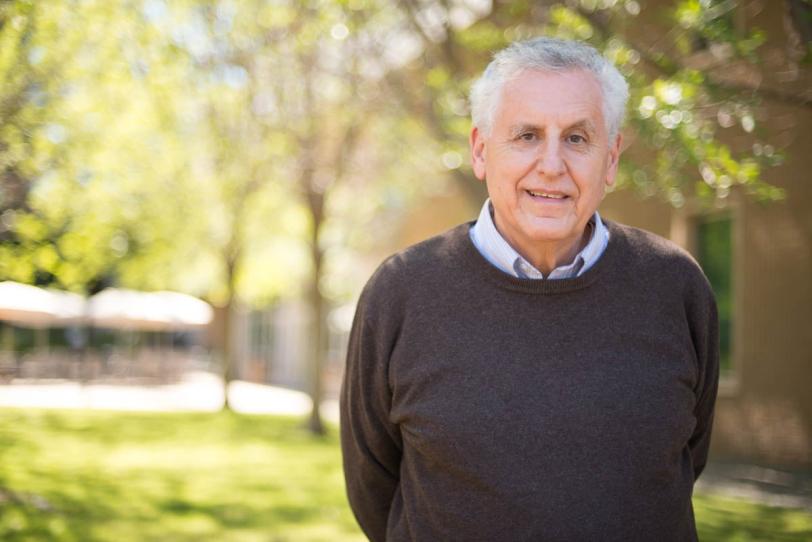SLAC Theorist Helps Sharpen Tests of Fundamental Theory in High Energy Experiments
Three theoretical physicists have taken an important step toward eliminating theoretical ambiguities from the staggeringly complicated mathematics used to explore the interactions of quarks, the tiniest known bits of matter inside protons and neutrons, and gluons, the enigmatic particles responsible for keeping them trapped there.
By Lori Ann White
Three theoretical physicists have taken an important step toward eliminating theoretical ambiguities from the staggeringly complicated mathematics used to explore the interactions of quarks, the tiniest known bits of matter inside protons and neutrons, and gluons, the enigmatic particles responsible for keeping them trapped there. Simplifying these calculations can make them easier for other particle theorists to perform and lead to more accurate predictions for experimental particle physicists to test.
The theory describing those interactions is known as quantum chromodynamics (QCD), and is an important component of the Standard Model, the reigning theory of the interactions of subatomic particles.
"An important goal in high energy physics is to make predictions that are as precise as possible," said SLAC theoretical physicist Stan Brodsky. "This makes tests of QCD more rigorous. Most important, if QCD doesn't pass our experimental tests, it could reveal new physics beyond the Standard Model."
In a paper published in Physical Review Letters, Brodsky and his colleagues – Matin Mojaza of CP3-Origins at the University of Southern Denmark and Xing-Gang Wu of Chongqing University in China – have presented a method that will help theorists to automatically eliminate an important theoretical ambiguity of QCD predictions.

Particle theorists attempt to put the quantum realm under a mathematical microscope. However, the world of subatomic particles operates according to very different rules than our familiar everyday world. Quantum uncertainties take hold. On the scale of quarks and gluons, E=mc2 is not a slogan on a t-shirt, it's the law of the land – if there's a possibility for a particular particle to exist, it, and others, will pop into and out of existence, obscuring what lies under the physicists' calculational lenses.
These "now you see them, now you don't" particles, called virtual particles, give rise to infinite terms in quantum calculations – a big problem for theorists, who must remove the uncertainty in their calculations caused by these infinities without introducing new ambiguities. This problem has obscured the precision of the theorists’ mathematical microscope.
Brodsky and his colleagues have been developing a method called the Principle of Maximum Conformality (PMC) which can focus the mathematical microscope into the quantum world.

Particle Physics From the Inside Out
SLAC particle theorist Stan Brodsky has learned how to dive into the equations of particle physics to look for deeper meaning.
SLAC National Accelerator Laboratory
Building on this work, in their new paper, Mojaza, Wu and Brodsky show how a novel generalization of a technique that many theorists employ to remove infinities, called modified minimal subtraction, can be used to identify patterns within the calculations. This, along with PMC, makes the calculations easier to reduce to a form that can be used to make testable predictions, free of ambiguities – the heart of scientific progress.
In addition to adding another tool to the theorists' toolbox and providing testable predictions to experimenters, their technique has another advantage, said Brodsky: "Since the method is systematic, it can be used as the basis of a computer algorithm," automating the calculations even further.
Contact
For questions or comments, contact the SLAC Office of Communications at communications@slac.stanford.edu.

About SLAC
SLAC National Accelerator Laboratory explores how the universe works at the biggest, smallest and fastest scales and invents powerful tools used by researchers around the globe. As world leaders in ultrafast science and bold explorers of the physics of the universe, we forge new ground in understanding our origins and building a healthier and more sustainable future. Our discovery and innovation help develop new materials and chemical processes and open unprecedented views of the cosmos and life’s most delicate machinery. Building on more than 60 years of visionary research, we help shape the future by advancing areas such as quantum technology, scientific computing and the development of next-generation accelerators.
SLAC is operated by Stanford University for the U.S. Department of Energy’s Office of Science. The Office of Science is the single largest supporter of basic research in the physical sciences in the United States and is working to address some of the most pressing challenges of our time.





